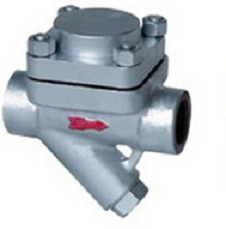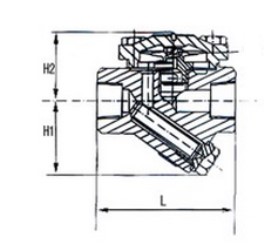- Control Valve
- Pneumatic Control Valve
- Pneumatic Angle Control Valve
- 3 Way pneumatic Diaphragm Control Valve
- 3 Way Converging and Diverging Control Valve
- Fluorine Lined Single Seat Control Valve
- Pneumatic Cage Control Valve
- Pneumatic Double Seat Control Valve
- Pneumatic Single Seat Globe Control Valve
- Pneumatic Flow Control Valve
- Pneumatic Sleeve Type Control Valve
- Pneumatic Actuated Globe Type Control Valve
- Electric Actuated Control Valve
- Pneumatic Control Valve
- Cryogenic Valve
- Pressure Reducing Valve
- Safety Valve
- Check Valve
- Gate Valve
- Butterfly Valve
- Globe Valve
- Ball Valve
- Electric Actuated Valve
- Electric Actuated Ball Valve
- Electric Actuated Butterfly Valve
- Electric Actuated Gate Valve
- Electric Actuated Globe Valve
- Pneumatic Actuated Valve
- Plunger Valve
- Strainers
- Steam Trap
- Knife Gate Valve
- Speciality Valve
- Alloy 20 Valve
- Duplex Valve
- Super Duplex Valve
- Hastelloy C276/B3 Valve
- Aluminium Bronze Valve
- Titanium Valve
- Bronze Valve
- Monel Valve
- Triple Duty Valve
- Suction Diffuser Valve
- Diaphragm Valve
- Plug Valve
- Foot Valve
- Air Release Valve
- Surge Anticipator Valve
- Needle Valve
- Balancing Valve
Middleeast Valve is the topmost Thermostatic steam trap suppliers in Saudi Arabia .A thermostatic steam trap is a device used in steam systems to automatically remove condensate and non-condensable gases (such as air) without allowing steam to escape. It operates based on the temperature difference between the steam and the condensate.
The primary function of a thermostatic steam trap is to discharge condensate as soon as it forms and to release non-condensable gases, ensuring that steam remains in the system to do useful work. This helps maintain the efficiency and effectiveness of the steam system.
Thermostatic steam traps work on the principle of temperature difference. Here’s a step-by-step overview of how they operate:
1)Temperature Sensing: Inside the steam trap, there is a thermostatic element, such as a bimetallic strip or a liquid-filled capsule. This element reacts to temperature changes.
2)Condensate Formation: As steam cools and condenses into water, the temperature of the condensate is lower than that of the steam.
3)Activation: When the temperature drops (indicating the presence of condensate), the thermostatic element contracts or expands, opening a valve.
4)Discharge: The valve opens, allowing the condensate to be discharged from the system.
5)Closure: As the hot steam reaches the trap, the temperature increases, causing the thermostatic element to revert to its original state, which closes the valve and prevents steam from escaping.
Features:
1)Temperature-Sensitive Element: Utilizes a bimetallic strip or a liquid-filled capsule that reacts to temperature changes.
2)Automatic Operation: Opens and closes based on the temperature differential between steam and condensate.
3)Compact Design: Generally small and can be easily installed in various types of steam systems.
4)Corrosion-Resistant Materials: Often made from durable materials to withstand harsh conditions.
Benefits:
1)Energy Efficiency: Minimizes steam loss, which leads to energy savings and improved system efficiency.
2)Automatic Operation: Reduces the need for manual intervention, lowering maintenance costs and labor.
3)Improved System Performance: Ensures that only steam is used for heating or process applications, maintaining optimal system performance.
4)Durability and Reliability: Designed to last long and provide consistent performance, even in demanding environments.
5)Reduced Downtime: Effective removal of condensate and non-condensable gases reduces the risk of water hammer and other issues, leading to less downtime.
Thermostatic steam traps are crucial components in steam systems, ensuring efficient operation and helping maintain the desired performance levels. By automatically handling condensate and gases, they play a vital role in optimizing energy use and reducing maintenance requirements.



